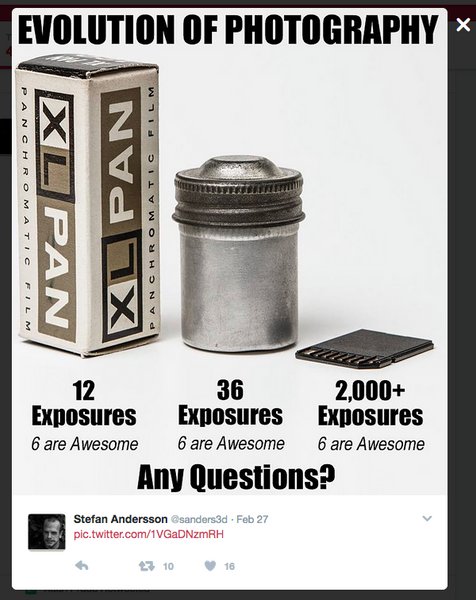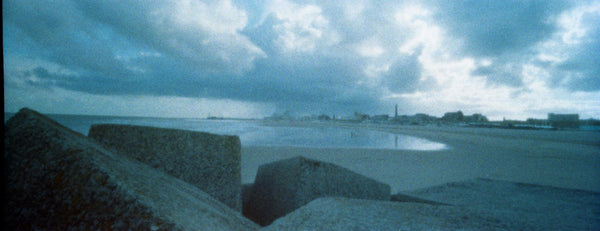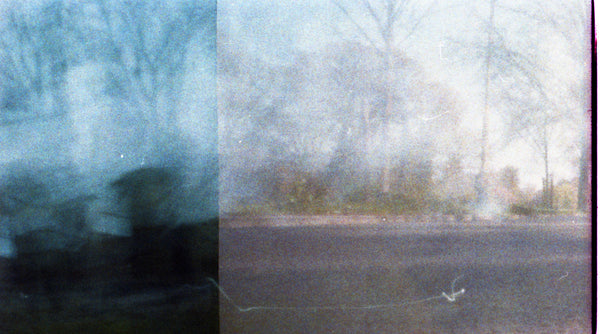LEROUGE Pinhole cameras - Review
This review was originally posted in 2017
LEROUGE Pinhole cameras Review - Intro
As part of an ongoing project started several years ago: how to how to have fun (a hobby etc.) outside (or partially ) the digital world.
The project got into a overdrive due to the John’s Mobile project.
About 30 years ago started with analog color & black and white photography and had some experimental projects that will be shown on the concepts part of this website later this year.
There are a lot of differences between analog photography and digital photography. A important advantage for digital is speed, you can do you ( commercial ) projects more quickly. If you ask me what has more “soul” my answer is analog!
Nowadays not sure why but shoot almost no images with my digital camera’s anymore ( except for the Dutch Skies 360° HDRI - Project ).
You make 1001 images with a digital camera and look only once to them (or never), its too easy. In the “old” days you had to be carefully shooting lost of images it was simply too expensive. While working on this review saw a nice image on Twitter that needs no explanation:

Now looking back, it was much more fun and exciting when you had a analog camera. You needed to be patient much more then current time where instant satisfaction is “needed” more and more.
Other point is that when your images (or any other documents etc) are only digital stored on a HD for example, a “simple” solar flame *) could be the cause that our memories or even complete history from the last 25 years could be gone in a few seconds.
*) A Solar storm of 1859 hit earth, consequences where minimal, if it would happen today it would be a huge disaster.
With film the images at least would be still here. Historians already are very worried with the fact that some very important parts of our lives are only/partially digital.
Note that working digital has lots of benefits so not going to abandon it. Just curious how this investigation will affect my future projects. Think the research will bring new idea’s / projects to work on. Already working on some projects, so more will be published in the ( near ) future.
If you like to stay update just join the newsletter or social media page on the left of this webpage.
LEROUGE Pinhole cameras Review - Part 1 - how it started
How it started
It was high on my investment list buying a analog camera again. Early February 2017 remembered seeing somewhere on the internet , a while ago, a company that produces handcrafted analog camera’s. Not sure anymore where seeing it until looked at my contacts in LinkedIn. Suddenly saw that was already in connection since 2012 with the owner of the company who (the camera’s are actually build by a friend of Marc – Philippe – in a small workshop in France ) sold the LEROUGE camera’s: Marc Kairies. If you want to order in France or UK please check the dealer list.
The LEROUGE camera's are handcrafted (!) camera's. Really keen on small companies who makes high quality products with lots of passion. Also noticing that in specially France lots of little companies started last years who make great handcrafted products. The other thing that like about is that the camera goes to the very origin of photography: a pinhole camera (note that the pinhole technique is most like like much older then the photography , a nice example is Tim's Vermeer or have a look here ). No batteries no extra's you just need a 35 mm film. There are other LEROUGE camera's that can handle other film formats like 120 or 4x5" to see those just scroll down on the info page.
So on 25 February contacted Marc directly through Linkedin, Marc reacted quickly resulting that on Sunday 26 February ordered the LEROUGE 135 black edition and the LEROUGE 135 L (panoramic) Red edition. The whole ordering process went smoothly.
This Part 1 of the review is the intro of this project, inclusive the arrival of both LEROUGE camera's. Part 2 of the review will be published in the near future, part 2 will be the actually testings etc.
While waiting on the package to be delivered (5 or 6 days is standard delivery time) started writing part 1 of this review , and asked Marc several questions:
Some info about Marc en Philippe
Question: "Why does Philippe build cameras?"
"Because he likes making things. Before he becoming a photographer in 2003, he worked in the industry for 20 years. First he made a 66 camera for his own use - then came the idea to start a small series and sell them.
It´s because he loves analog photography and the simple way to take pictures. And because all his knowlege is now arround photography which is his passion. Philippe starts selling LEROUGE Pinhole Cameras in his gallery three years ago."
Question: "Why does Marc / MK Panorama Systeme sell LEROUGE Pinhole Cameras cameras?"
"Since 2006 (23 years old!) Marc has been dealing with the panoramic photography (camera technology). From Noblex, Seitz Roundshot to his own products. Now he is passionate about analog photography. In 2016 he met Philippe and start to sell his products. Pure passion!"
Well doing the "things" with passion sounds always good!
Are the LEROUGE Weather proof
Question: "Are LEROUGE Pinhole Cameras safe for rain and dust/sand?"
"Like 99% of cameras in the market, LEROUGE Pinhole Cameras are not wheather proof.
According to manufacturer, sand, dust, water is to be avoided.
But a funny story:When we shoot the advertising photos of the LEROUGE Pinhole Cameras on the beach of St. Peter Ording (North Sea) into my Leica V-Lux 4 flew so much sand that now the zoom lens is only working from time to time - fine sand in the zoom!
My 2 LEROUGE Pinhole Cameras I had only to blow and the dry, fine sand was gone!
However it is up to the photographer to use his camera carefully"
Size
Below you can see a comparison of the smallest 35 mm camera Minox made in the past and the LEROUGE 135 and the LEROUGE 135L
On the image you see two people:
Reinhard Lörz (MINOX Club member and owner of the MINOX Museum)
& Peter Baum (Visitor and MINOX Club member)
Extra info (English translated ) - Extra info (German)
Translated version:

The LEROUGE 135 is already pretty small but hope that a even smaller version would be possible to create. A version that fits even more easily in your pocket. For me personally the LEROUGE 135 is still a bit too big. Think that creating a smaller version then the 135 would need some big design altering. The perfect size would be for example the size of the smallest disposable 35 mm camera or the Lomography Baby Diana 110 Camera. So perhaps a LEROUGE with a 110 film? Anyway for now its no big deal off course, let continue!
Film types
What surprised me is that there is still a vivid market for films. For example ADOX.
Going to test - in Part 2 of the review - two 35 mm films:
1) ADOX Silvermax 100 film
2) ADOX Color implosion (not available anymore due to limited edition)
In the Netherlands films and other needed parts can be ordered at FotofilmFabriek
Back to top
Unpacking images
The package arrived on 4 March!
Made some unpackaging images. As you can see it all looks carefully packed. Marc gave very kindly two free ADOX Silvermax 100 films for free!
The camera's are amazing: handcrafted masterpieces!

This is the end of part 1. Part 2 will cover the the testings and other findings/ notes. Due to having lesser spare time the coverage of Part 2 will take a while have the idea 1 or 2 months. Exited to actually start testing the LEROUGE camera's that's for sure!
If you want to stay update about the LEROUGE pinhole camera's testings, please consider to join the social media pages or join the newsletter on the left of this website website.
LEROUGE Pinhole cameras Review – Part 2 - Intro
As part of an ongoing project started several years ago: how to how to have fun (a hobby etc.) outside (or partially ) the digital world.
Here is part 2 of the LEROUGE Pinhole camera test.
This was a great adventure! Some nice unexpected things happened, really magically.
Used The film type + loading the film
Only used for this test the Color Implosion - Experimental color negative - from Adox ( update: this film is not available any more due to a Limited Edition) . Later want to try other film types like B/W film, standard films etc.
Below you can see some images of the whole loading film procedure:

Recording notes/ experiences
The odd thing when taking pictures with the LEROUGE camera is the fact that after you have exposed a image, the transfer to the next (unexposed) image is not going automatically. You need to manually adjust it (after years of shooting digital that's pretty weird). Also the Red version is panoramic so instead of turning the round (film transfer) button 1 time you need to turn it 1,5 time.
Next to that the exposure time needs to be set manually.
Bright sunshine: 2 sec
Hazy sunshine: 4 sec
Cloudy bright: 8 sec
Cloudy: 15 sec
Other thing noticing is that you must not forget closing the shutter it off course after exposing a image (pretty odd to keep thinking about too).
When you reach the end of the film you feel it, the film transfer button stuck. Now you can open the camera and move the film to the other side and close the camera again. Next you can rewind the film.
All this issues together makes the recording a true adventure.
First recording results
Next thing to do is getting the film developed. Off course was extremely excited to bring the exposed first film to the company that can develop negative films. In this case brought it to the HEMA in the Netherlands. It was along time ago that needed to fill in the form from the envelop:

It takes 4 workdays until the film is developed. Just like the old days had the be patient, very good for your imagination too.
4 days later picked up the negatives and quickly opened to envelop...... and was completely surprised to see. It was not panoramic at all! It looked to say at least a bit weird. Have a ION Film 2 SD scanner here and scanned the images.
Could not remember shooting a rare blood-moon.....

.... or might I have accidentally opened a portal to another dimension?

Sended the strange looking images images to Marc Kairies and ask what could be wrong. He reacted quickly and told that the film would be most likely be installed wrongly. Indeed had the film mounted directly after the pinhole instead of on the back side (when you think about is some more is logically that the film is not projected correctly). The manual ( English - German pdf ) looked so easy (and also the camera is build very simple as you can see) not looked closely enough to such pretty important detail! The results are as you can see pretty wicked but looks great. You now know what to do if you want to create the same effect :)
Next ordered a couple of new Adox Color Implosion in the Netherlands at fotofilmfabriek so can do some new recordings this time with the film mounted correctly.
Scanning the negatives
Recorded 3 new Adox Color Implosion films with several different topics. Again the films were developed at the Hema. So for showing the images on this website the images need to be scanned. Wanted to have the scan on a higher resolution then could make with ION scanner. And noticing here that scanning it myself is pretty difficult because of dust problems. Found on the internet a Dutch company that could scan the negatives for a affordable price: Scanit.
They made 70 scans at 20 MP. The cost are 57,25 Euro incl USB stick and signed post not that expensive. Another great service was that they sended some test scans to let me see if it was ok.
A extra note regarding the negatives: when got them back from the Hema saw that some images where cut partially. This is caused mostly by the panorama format of the LEROUGE 135 L. Its 1,5 wider the size of a standard 35 mm. When you would develop your own films you easily can avoid it (but developing your own color negatives is a bit more difficult then developing your own B/W negatives). It's not be a big issue you easily can fix it with photo editing software. Mentioned it to Scanit and they told keeping an eye on it and make the scan a bit bigger (bigger then the edge of the image ).
Got everything back by signed post within about 5 days, and was surprised to see that Scanit did already some restoring regarding the cut images! Great service!
Results, corrections & image analyses
Now it was time to make a small selection with some different subjects. The images are a bit edited in Photoshop by altering the levels, curves & vibrance. This was only done quickly so the images will be most likely more refine in the near future.
Some examples









Really like the images shot with the LEROUGE 135L. As you can see the images are pretty noisy (some more then the others). This is mainly due the fact of the film type that has been used. There is also missing some sharpness that could be caused by the fact that might have shaken the camera too much with opening/closing the shutter or the persons where moving? For sure that there are more other influences that causes the images to look like this. Extra note: have asked the permission to post the images from the persons who are visible except the person on the right in the train, not have his contact info so hope he's ok with it.
Almost ARD
Several images are not deliberately taken but they look pretty "arty" (please see below). Perhaps going to make series with such "accidentally?" taken images. The series might be called "Almost ARD", althrough not sure about the name yet. Was already planning a online store for a new product in the near future, will most likely add the "Almost ARD" collection in it. It will be exclusive (after been bought you get the original negative too) or in very limited editions.
If the images will be sold will let the films scanned at a photolab. The quality will be higher but also the scanning price. A high quality scan could cost about 20 to 30 euro. For most work the scan service from the Scanit is more then enough.
If you like to be informed about the "Almost ARD" series please follow the social media pages or just join the newsletter.



Conclusion
Had great fun with shooting with LEROUGE 135L. So far its a great fantastic adventure for sure will record more images. Besides that the panoramic format of the LEROUGE 135L is really wonderful.
Shooting analog and specially with the LEROUGE 135L pinhole camera has more soul. You are much more connected with the shooting and the processing part. Another thing is time, the "rhythm" is different then shooting digital. No rush/hurry and that's pretty relaxing. Also the excitement is back from bringing a full exposed film meanwhile fantasizing how it will look like, then you can pick up the present a couple days later, very exiting feeling like I had it in the past when started shooting images analog.
In the near future will launch a LEROUGE gallery here on this website. Already bought another Adox Color Explosion and some new films types a) Rollei Chrome CR 200 b) Cinestill XPro 50 Daylight to experiment with.
This is the end of the review of the magically LEROUGE camera's. If you want adventure just buy it!
One last extra note about the shutter time:
Asked Marc Kairies a rather stupid question:
QUESTION: "When want to shoot indoor in the evening/ night with moody light how many seconds do I need to exposure the color explosion film? About 30 seconds?"
"There are classic exposure meters, smartphone apps even with a light meter available or a good belly feeling - there is no advice, it depends on the light - from a few seconds to many minutes (it does not depend on the seconds, but a flat of 30 seconds is not a good advice)"
He's right off course that makes sense already decided to go for the autodidactical (normal modus here) approach (specially for the "Almost ARD" project) : a mix with luck, instinct, 299% motivation/passion, & some other ingredients that has no name yet. Besides that always to know things for sure is very boring!
© 2019 Products, brand names and logo’s (and some product shots above) are trademarks or registered trademarks of their respective companies.

